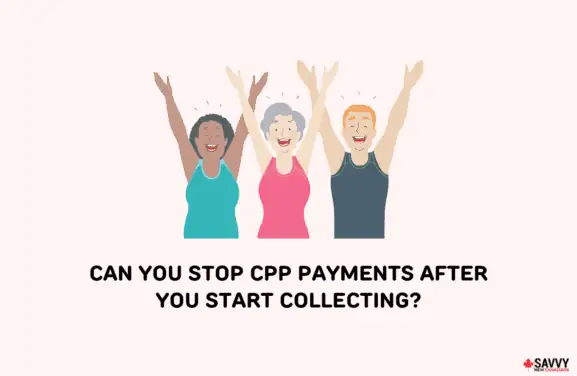Being a senior in Saskatchewan makes you eligible for various government benefits.
Apart from federal-wide government pension programs like the CPP, OAS, GIS, and CPP Survivor’s Pension, low-income seniors in Saskatchewan may also be eligible for the Saskatchewan Seniors Income Plan (SIP).
This article covers exactly what each of these benefits offers to seniors and how you can apply for them.
Key Takeaways
- Only seniors who are considered “low-income” in Saskatchewan can receive the Saskatchewan Seniors Income Plan (SIP) pension.
- Single seniors earning less than $4,560 of taxable income annually fall under Saskatchewan’s “low-income” category. Married seniors have higher combined income thresholds.
- Seniors in Saskatchewan may be eligible for five government grants, which include the SIP, CPP, CPP Survivor’s Pension, OAS, and GIS.
What is Considered Low Income for Seniors in Saskatchewan?
The “low-income” thresholds for seniors, which determine their eligibility for the Saskatchewan Seniors Income Plan (SIP), depend on which “client category” the senior falls under, or more simply, their living-at-home situation.
For example, if you’re a senior without a spouse living in your own home, you can receive SIP benefits if your annual taxable income doesn’t exceed $4,560.
However, if you’re married to a spouse who’s less than 60 years old, you’d only be eligible for the SIP if your combined annual taxable income doesn’t exceed $11,232.
The tables below breakdown the income thresholds for different client categories:
For seniors living at home
| Client Category | Annual Taxable Income Level for SIP to become $0 |
| Single (is an OAS/GIS recipient) | $4,560 |
| Married (both are OAS/GIS recipients) | $7,440 |
| Married (spouse is younger than 60 years old) | $11,232 |
| Married (the spouse is receiving OAS/GIS) | $9,120 |
For seniors living in a Special Care Home
| Client Category | Annual Taxable Income Level for SIP to become $0 |
| Single (is an OAS/GIS recipient) | $912 |
| Married (both are OAS/GIS recipients) | $1,776 |
| Married (spouse is younger than 60 years old) | $9,216 |
| Married (the spouse is receiving OAS/GIS) | $1,824 |
Government Grants for Seniors in Saskatchewan
Let’s go over each government grant that seniors in Saskatchewan may be eligible for.
Saskatchewan Seniors Income Plan (SIP)
The Seniors Income Plan is a monthly supplement provided to seniors in Saskatchewan who have little to no income other than their federal Guaranteed Income Supplement (GIS) and Old Age Security (OAS) pension.
As this assistance aims to help seniors meet their basic needs, only those whose annual taxable income falls within specific income thresholds (as shown in the tables above) will be eligible to receive monthly monetary benefits from the SIP program.
Through the Seniors Income Plan (SIP) financial assistance, seniors living at home can receive a maximum of $360 a month, while those living in Special Care Homes can receive up to $50 monthly, depending on their exact annual taxable income.
Canada Pension Plan (CPP)
The Canada Pension Plan (CPP) is a monthly, taxable benefit provided to seniors who have made at least one valid CPP contribution.
Since it’s compulsory for every adult working in Canada (except Quebec) to contribute to CCP, almost every senior in the country is eligible to receive CPP’s monthly benefits.
How much you can receive from the CPP depends on how long and how much you’ve contributed to the plan throughout your working years, with a maximum monthly benefit of $1,364.60.
CPP Survivor’s Pension
The CPP Survivor’s Pension is a monthly benefit paid out to the legal spouse or common-law partner of a deceased CPP contributor.
As a survivor who’s not receiving other CPP benefits yet, you can receive 60% of the deceased contributor’s retirement pension if you’re at least 65 years old or 37.5% of their contribution if you’re younger.
However, the maximum amount you can receive from the combined CPP and CPP Survivor’s Pension benefits is still $1,364.40 monthly.
Old Age Security (OAS)
Old Age Security (OAS) is a monthly, taxable benefit provided to seniors in Canada who are 65 years old or older.
Unlike the CPP benefits, which are directly linked to your employment history, OAS provides financial assistance to all seniors who have lived in Canada for at least 10 years during their adulthood.
The amount you can receive from the OAS pension depends on your age and how long you’ve lived in Canada. For seniors aged 65 to 74, the maximum monthly OAS payment is $713.34, and for those aged 75 and older, the maximum monthly payment is $784.67.
Guaranteed Income Supplement (GIS)
The Guaranteed Income Supplement (GIS) is a non-taxable monthly payment that seniors can receive to supplement their income.
Seniors aged 65 or older who receive the Old Age Security (OAS) pension can qualify for the GIS, provided that their annual income falls within the specified income threshold of this program.
The table below shows the maximum monthly payment amount you can expect from the GIS based on your situation and annual income.
| Your situation | Your annual income must be | Maximum GIS benefit per month |
| Single/divorced/widowed | Less than $21,624 | up to $1,065.47 |
| With a spouse/common-law partner receiving the full OAS pension | Less than $28,560 (as a couple) | up to $641.35 |
| With a spouse/common-law partner receiving the Allowance | Less than $39,984 (as a couple) | up to $641.35 |
| With a spouse/common-law partner who doesn’t receive an OAS pension or Allowance | Less than $51,840 (as a couple) | up to $1,065.47 |
How to Apply for Senior Benefits in Saskatchewan
The application process for senior benefits in Saskatchewan depends on the type of benefits you’re applying for. Sometimes, being eligible for one benefit automatically determines your eligibility for another senior benefit in the province.
In other cases, you’ll need to personally apply for the benefit online or by sending an application on paper.
Here’s a table that outlines how you can apply for the 5 seniors benefits mentioned above.
| Seniors Benefit | Application Process |
| CPP Retirement Pension | Manual application is needed and can be submitted online (through your My Service Canada Account) or by paper. |
| CPP Survivor’s Pension | Manual application is needed and can be submitted online (through your My Service Canada Account) or by paper. |
| Old Age Security (OAS) pension | Some seniors are automatically enrolled, but others may need to apply manually online or on paper. You may contact Service Canada directly to know whether you still need to apply. |
| Guaranteed Income Supplement (GIS) | Some seniors are automatically enrolled, but others may need to apply manually online or on paper. You may contact Service Canada directly to know whether you still need to apply. |
| Saskatchewan Seniors Income Plan (SIP) | You’ll automatically be enrolled if the income you report on your GIS application or income tax return is within the SIP’s eligible income threshold. |
FAQs
What can Canadian seniors get for free?
Canadian seniors can receive federal and provincial monetary benefits for free, provided that they meet the eligibility requirements. The OAS, for example, is a free income supplement available to all seniors who have lived in Canada for more than 10 years of their adulthood.
What is the $500 grant for seniors in Canada?
The federal government issued $500 one-time top-up payments to over 800,000 families who were renting in early 2023. That grant aimed to provide rent support to individuals earning less than $20,000 annually or families making less than $35,000 annually, not necessarily seniors.
What is the senior income supplement in Saskatchewan?
The Senior Income Supplement in Saskatchewan aims to provide monetary aid for seniors who earn little to no additional income apart from the federal pensions they receive. If you’re a senior who meets the specified income threshold of the program, you can earn up to $360 a month if you live in your own home.
Which province has the best benefits for seniors?
Every province has different income thresholds and monetary amounts for their provincial senior’s benefits, making it hard to compare which one has better benefits directly. Consider reading this article to know which province offers more suitable benefits for you or your loved ones.



